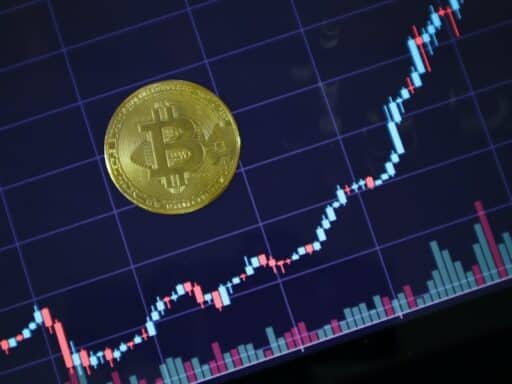Principle-protected notes (PPNs) are fixed-income securities that guarantee a return of at least the invested principal. This guarantee of the return on the initial investment distinguishes them from other investment instruments.
In the U.S., these notes go by various names, such as structured securities, structured products, or non-conventional investments. In Canada, they are referred to as equity-linked notes or market-linked GICs.
While they share similarities with structured investment products and structured notes, principle-protected notes stand out due to their principal guarantee.
If you want to invest as an expat or high-net-worth individual, you can email me (advice@adamfayed.com) or use these contact options.
Table of Contents
Historical Evolution of PPNs
The financial market introduced principle-protected notes in response to investors’ demand for safer investment options. Over time, PPNs have evolved, offering various structures and underlying assets.
However, the core principle of protecting the investor’s principal remains consistent. Historically, to achieve higher returns, investors would typically increase the risk exposure of their portfolio by adding more equities.
But with principle-protected notes, investors can seek higher returns with the added benefit of a principal guarantee. This unique combination of potential growth and security has made PPNs increasingly popular among investors.
Regulation and Disclosure of PPNs
Compared to stocks and bonds, principle-protected notes are complex investments. Their performance depends on the linked investment, making it challenging to determine their performance and valuation.
Regulators, such as the National Association of Securities Dealers (NASD) and Canadian Securities Administrators, have expressed concerns about the risks associated with PPNs. They emphasize the need for due diligence by both the seller and the purchaser of a note.
Numerous Fees Associated with PPNs
Principle-protected notes, like all managed investment products, come with fees. The principal guarantee in PPNs is essentially the purchase of insurance. This insurance premium is akin to the interest foregone when choosing a principle-protected note over an interest-bearing security.
Apart from the insurance premium, PPNs have other fees, including selling commissions, management, performance, structuring, operating, trailer, and early redemption fees. Investors must understand these fees as they can impact the potential returns from the note.
Understanding the Risks
All investments come with risks, and principle-protected notes are no exception. Some of the risks associated with PPNs include:
- Interest Rate Risk: Interest rate changes can significantly impact a note’s net asset value (NAV).
- Zero-Return Risk: There’s a risk of receiving no income, leading to a loss of purchasing power and real returns.
- Fee Risk: The fees charged might be higher than expected, reducing the return.
- Suitability and Liquidity Risk: There’s a risk that the note might not be suitable for the investor, and if liquidated before maturity, it might fetch less than its NAV.
- Creditworthiness Risk: The creditworthiness of the issuer is crucial. The investor might not receive the guaranteed principal if the issuer goes bankrupt.
Potential Investment Scenarios for PPNs
Investors might consider principle-protected notes if they believe the asset linked to the note offers a return potential exceeding that of a fixed-income investment.
As long as the investor is comfortable with the risk of no return, PPNs can benefit from market growth without risking the invested principal.
Whether bypassing regulatory restrictions or seeking exposure to speculative positions with downside protection, PPNs offer various investment scenarios for novice and sophisticated investors.

The Mechanics Behind Principle Protected Notes
Principle-protected notes (PPNs) are a unique financial instrument for risk-averse investors. When you allocate funds to a PPN, you divide your investment.
A segment of your investment goes into a zero-coupon bond, which matures at the invested principal amount. The remaining portion finds its way into an option or derivative product, giving you exposure to an underlying asset, often a stock index.
The underlying asset plays a pivotal role in determining principle-protected notes’ returns. A well-performing asset means the PPN yields a return. On the flip side, if the asset doesn’t meet expectations, the principal protection feature ensures you don’t lose your initial investment.
Principle-protected notes shine with their guarantee feature. Market downturns or underwhelming performance of the underlying asset won’t rob you of your initial investment, thanks to PPNs.
Differentiating Between PPNs and Traditional Bonds
Both principle-protected notes and traditional bonds promise returns. However, their structure and associated risk profiles set them apart.
While traditional bonds consistently pay interest, PPNs base their returns on the underlying asset’s performance. This structure means that in a market that favors the asset, principle-protected notes can potentially outperform bonds in terms of returns.
Principle-protected notes also come with a promise: the return of the principal. This guarantee makes them a safer bet than traditional bonds, which can depreciate if interest rates surge.

The Nuances of PPNs
A principal protected note (PPN) is a structured finance product that promises a return rate of at least the principal amount invested, provided the note remains until maturity.
The structure of a PPN combines a zero-coupon bond with an option linked to an asset, index, or benchmark. The performance of this linked entity dictates the payoff.
For instance, if linked to an equity index like Russell 2000 that sees a 30% rise, the investor enjoys the full 30% gain. Essentially, principle-protected notes commit to returning the investor’s principal at maturity, with potential gains if the index performs within a specified range.
The Creditworthiness Factor
However, it’s crucial to note that the principal guarantee in principle-protected notes hinges on the creditworthiness of the issuer or guarantor.
If the issuer faces bankruptcy and defaults on payments, including the repayment of the principal investment, investors stand to lose their principal. Since these products are classified as unsecured debt, investors rank below secured creditors.
The Maturity Clause
Another aspect to consider is the maturity clause. Investors must retain these notes until maturity to receive the full payout. Since these notes can have extended maturities, locking funds for prolonged periods might only be ideal for some investors.
Additionally, early withdrawals could incur charges, and partial withdrawals might reduce the amount available upon full surrender.
The Dark Side of PPNs
The 2008 credit crisis and the collapse of Lehman Brothers highlighted some of the pitfalls of principle-protected notes. Many investors, unaware of the intricacies of these notes, found themselves at a loss.
For instance, for an investor to earn the return of the linked index and retrieve the principal, the index might need to stay within specific limits, neither falling nor rising beyond set percentages.
Investors might only get their principal back if the index breaches these levels during the holding period.
The Alternative: Principal Protected Funds
Principal-protected funds offer an alternative for those wary of the complexities of individual PPNs. These funds, primarily composed of principle-protected notes, aim to shield an investor’s principal.
However, the returns on these funds get taxed as ordinary income, and the fees fund the derivative positions used to guarantee the principal returns and minimize risk.
Benefits of Investing in Principle-Protected Notes
Guaranteed Return of Principal
One of the standout features of PPNs is their promise to return the investor’s initial investment. This guarantee, irrespective of the performance of the underlying assets, provides a safety cushion for investors.
Security for Conservative Investors
For investors who lean towards conservative investment strategies, PPNs are appealing. The core promise of PPNs is that they safeguard the initial investment, ensuring that even in unfavorable market conditions, investors won’t lose the money they put in.

Peace of Mind in Volatile Markets
Market volatility can be a significant concern for many investors. However, PPNs offer a semblance of stability in such unpredictable scenarios. With PPNs, even if the market takes a downturn, the guaranteed return of principal ensures that investors can rest easy, knowing their initial investment remains intact.
Potential for Higher Returns
Beyond the safety net, PPNs also provide avenues for potentially higher returns, making them an attractive proposition for those looking to balance safety with growth.
Exposure to Diverse Assets
One of the strengths of PPNs is their ability to offer exposure to a variety of assets. Whether it’s stock indices, commodities, or other financial instruments, PPNs allow investors to diversify their portfolios.
This diversity not only spreads the risk but can also lead to attractive returns if the underlying assets perform well.
Performance-Linked Upsides
The structure of PPNs is such that their returns are intrinsically linked to the performance of the underlying assets. This means that if the asset or index to which the PPN is linked performs well, the investor stands to gain.
For instance, if a PPN is linked to an equity index like the Russell 2000, and the index registers a 30% gain, the investor will benefit from this full 30% increase.
This performance-linked upside makes PPNs an enticing option for those looking to capitalize on market gains while still maintaining a safety net.
However, it’s essential to note that while PPNs offer a guaranteed return of principal, this guarantee hinges on the issuer’s creditworthiness.
If the issuer faces bankruptcy and defaults on its payments, including the repayment of the principal investment, investors could potentially lose their principal.
Additionally, for investors to reap the full benefits of PPNs, they must hold these notes until maturity. Early withdrawals might come with charges, and partial withdrawals could reduce the amount available upon full surrender.
Risks and Limitations of PPNs
Limited Upside Potential
While PPNs offer a safety net in guaranteeing the principal, they also come with certain limitations that can affect the potential returns.
A defining feature of most PPNs is the cap on potential returns. This cap means that even if the underlying asset sees a significant value surge, the PPN returns will remain limited. Investors need to be aware of this cap and understand that their gains might not fully reflect the underlying asset’s performance.
Direct investments in an underlying asset often yield higher potential returns than PPNs. The trade-off for the guaranteed return of principal in PPNs is often a lower potential return.
For instance, if an equity index linked to a PPN rises by 30%, the investor might receive the full 30% gain. However, there could be conditions in the fine print, such as the index not falling or rising beyond certain levels during the holding period. If these conditions aren’t met, investors might only get their principal back.
Credit Risk of the Issuer
One of the most significant risks associated with PPNs is the issuer’s credit risk.
Investors must check the credit rating of the issuer before investing in PPNs. A lower credit rating can indicate a higher risk, and the guarantee of principal return is only as good as the issuer’s creditworthiness.
If the issuer faces financial difficulties or goes bankrupt, the promised returns and even the principal might be at risk.
The guarantee of principal in principle protected notes is subject to the issuer’s ability to fulfill its obligations. In rare cases, if the issuer defaults, investors might not receive their guaranteed principal.

A notable example is the collapse of Lehman Brothers in 2008. The firm had issued many PPNs, and when it went bankrupt, many investors faced losses as they needed to gain more knowledge of these products and their associated risks.
Furthermore, PPNs are essentially unsecured debt. In the event of a default, investors fall below the tier of secured creditors, which can further jeopardize their chances of recovering their principal.
Holding Period and Early Withdrawal Implications
- PPNs often require investors to hold them until maturity to receive the full payout.
- These notes can have long-term maturities, which might not be suitable for all investors, especially those who might need liquidity in the short term.
- Early withdrawals from PPNs can be subject to charges, and partial withdrawals might reduce the amount available upon full surrender.
Who Should Consider Investing in PPNs?
Principle-protected notes have gained traction among various investor profiles, primarily due to their unique blend of safety and potential for higher returns.
However, like all investment vehicles, PPNs are only sometimes universally suitable.
Profile of an Ideal PPN Investor
Principle-protected notes cater to a specific investor profile. Those who prioritize safety but also desire some exposure to higher returns often find PPNs to be an attractive option.
Risk Tolerance Levels
Every investor has a unique risk tolerance level, determining their comfort with potential losses. Investors with a low to moderate risk tolerance often gravitate towards principle-protected notes.
The primary reason is the guaranteed return of the principal, which offers a safety net against potential market downturns.
This guarantee ensures that even in unfavorable market conditions, investors will at least recoup their initial investment.
Investment Horizons and Goals
Investment horizon refers to an investor’s time to hold onto their investment before selling it. Principle-protected notes are typically more suitable for those with a medium to long-term investment horizon.
PPNs often have fixed terms; the principal protection feature is most beneficial when held to maturity. Short-term traders, who frequently buy and sell securities, might benefit less from the features of PPNs.
Scenarios Where PPNs Might Not Be Ideal
While principle-protected notes offer numerous advantages, they might not align with every investor’s goals.
Active Traders and Short-Term Investors
Active traders, frequently buying and selling securities, might find principle-protected notes restrictive due to their fixed terms. The structure of PPNs doesn’t lend itself well to short-term trading strategies.
Similarly, short-term investors, typically holding investments for less than a year, might prefer more liquid options, allowing quicker entry and exit.
Those Seeking Maximum Capital Growth
For investors whose primary goal is maximum capital growth, principle-protected notes might not be the most suitable option. While PPNs offer potential returns linked to the performance of an underlying asset, they often cap these returns.
This means that even if the underlying asset sees significant growth, the returns on the PPN might be limited. Investors comfortable with higher risk in exchange for potentially higher rewards might find other investment vehicles more aligned with their objectives.
Creditworthiness of the Issuer
An often overlooked aspect of principle-protected notes is the credit risk associated with the issuer. If the issuer faces financial difficulties or goes bankrupt, the promised return of the principal might be at risk.
Therefore, before investing in PPNs, assessing the issuer’s creditworthiness is crucial.
Understanding the Complexities
PPNs are more complex than traditional bonds or stocks. Their performance depends on the linked investment, and various factors can influence their returns, such as interest rate changes, fees, and the underlying asset’s performance.
Investors need to ensure they fully understand these complexities before investing.
Potential for Zero Returns
While the principal is protected, investors may only receive their initial investment back without any additional returns, especially if the underlying asset doesn’t perform well.
This scenario could result in a loss of potential earnings from other investments.
How to Invest in Principle-Protected Notes
(PPN) has become an attractive option for many investors due to the unique combination of potential returns and the safety of the principal amount.
However, diving into the world of PPNs requires a strategic approach, an understanding the nuances, and an awareness of the current market dynamics.
Choosing the Right PPN for Your Needs
The market offers a plethora of principle-protected notes, each with its distinct features and benefits.
Making an informed choice is crucial to aligning your investment with your financial goals.
Assessing Underlying Assets
The performance of principle-protected notes is often tied to underlying assets. These assets can range from stock indexes, commodities, bonds to currencies. Before investing, research these assets thoroughly.
Understand their historical performance, volatility, and how they react to market changes. For instance, global gold prices will influence a PPN linked to a commodity like gold.

Understanding Fee Structures
Every investment comes with its set of fees, and principle-protected notes are no exception. Some PPNs have upfront fees, while others charge annual management fees.
Being aware of these charges is essential as they can significantly impact your overall returns. Compare the fee structures of different PPNs to ensure you’re getting a fair deal.
The Purchase Process
Once you’ve decided on the right principle-protected notes for your needs, the next step is the purchase process.
This process might vary slightly depending on the financial institution, but some general steps remain consistent.
Working with Financial Institutions
Most banks and insurance companies offer principle-protected notes. Working with a reputable institution with a strong track record is advisable.
Additionally, consider consulting with a financial advisor who can guide you through the intricacies of PPNs, ensuring you make informed decisions.
Key Documents and Disclosures
Transparency is crucial when investing in principle-protected notes. Financial institutions should provide you with detailed documents outlining the terms and conditions of the PPN.
This includes information about the underlying assets, potential returns, fees, and the maturity period. Always read these documents carefully.
Understand the conditions under which your principal is protected and the scenarios in which you can expect returns.
Current Trends and Considerations in PPN Investments
Principle-protected notes have seen various trends and developments in the evolving financial landscape. Here are some current insights:
Types of PPNs
There are several types of principle-protected notes available:
- Bond-linked principal-protected notes: Linked to a bond index or bond performance.
- Equity-linked PPNs: Tied to a stock index or specific stock performance.
- Commodity-linked PPNs: Directly linked to commodities like gold.
- Currency-linked PPNs: Connected to currency performance or currency index.
- Structured PPNs: Investment in a mix of assets, including bonds, stocks, and commodities.
Features of PPNs
Some notable features of principle-protected notes include:
- Assured principal: Regardless of market performance, investors receive their initial investment at maturity.
- Potential for profits: Returns correlate with the underlying asset’s performance or index.
- Diversification: PPNs can diversify a portfolio, reducing overall risk.
Why Investors Choose PPNs
The appeal of principle-protected notes lies in the following:
- Capital protection: The principal amount remains safe.
- Opportunity for profits: There’s potential for gains depending on the market.
- Tax benefits: PPNs might offer tax advantages, depending on regional regulations.
Tips for Successful PPN Investment
To maximize the benefits of principle-protected notes, consider the following tips:
Align with Investment Goals
Ensure that your PPN investment aligns with your broader financial objectives. Whether you’re looking for long-term growth or capital preservation, choose PPNs that fit your strategy.
Be Aware of the Terms
Every PPN comes with specific terms and conditions. Familiarize yourself with these to avoid any surprises down the line.
Consider Long-Term Investment
Principle-protected notes typically have longer maturity periods, often ranging from 5 to 10 years. Ensure you’re comfortable locking in your capital for this duration.
Pained by financial indecision? Want to invest with Adam?

Adam is an internationally recognised author on financial matters, with over 760.2 million answer views on Quora.com, a widely sold book on Amazon, and a contributor on Forbes.



